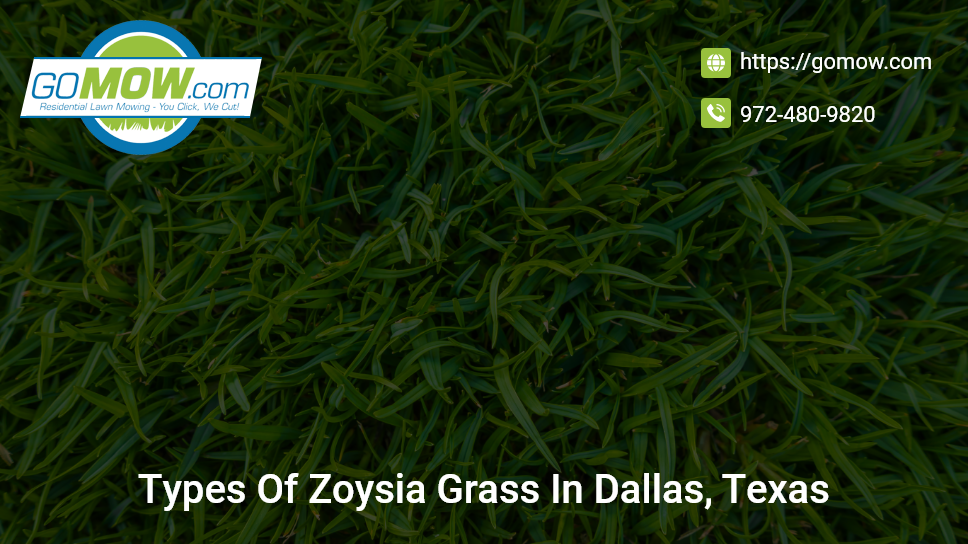Types of Zoysia Grass in Dallas, Texas

Zoysia grass is one of the best warm-season grasses for Dallas, Texas, known for its durability, dense texture, and heat tolerance. There are several popular types of Zoysia grass Emerald, Zeon, El Toro, and Palisades each with unique qualities suited to different lawn needs. Emerald offers fine texture and rich color, Zeon grows quickly with shade resistance, El Toro is low-maintenance and drought-tolerant, while Palisades stands up well to heavy foot traffic. Zoysia’s thick growth helps prevent weeds and reduces water use, making it ideal for Texas homeowners seeking a beautiful, sustainable lawn.
What is Zoysia Grass?
Zoysia grass in Dallas is a warm-season grass that has more than 10 varieties. As a warm-season grass, it is commonly found in the southern states. Zoysia grass is prevalent in Texas, South California, Georgia, etc. It is a beautiful, durable, sun-loving but slow-growing species of grass.
If you want a lawn that requires minimal mowing time, then Zoysia is the ideal grass type to consider. The only downside to Zoysia grass is the fact that it takes a while for it to get established. However, once that happens, you are good to go with your Zoysia lawn yard.
What Are the Types of Zoysia Grass?
As already stated, Zoysia grass has different variants – up to 10 or more variants with different strengths and capabilities. Whichever you decide to go for should be based on your needs. For Texas residents, the focus should be on varieties that tolerate heat, grow faster than average, can survive droughts, and are easier to maintain.
Below are the most common types of zoysia grass in Texas.
Zoysia japonica
This variant of Zoysia grass grows thick, has good heat tolerance, and is drought-resistant. It is one of the first varieties brought to the US. Zoysia japonica is also called Japanese lawn or Korean lawn grass.
Zoysia tenuifolia
Zoysia tenuifolia is the slowest-growing Zoysia grass, as beautiful and unique as it is. This variant is leafy-green, lush, and fragile-looking. Consider using Zoysia tenuifolia as mulch cover in areas of the lawn that have shade. It is shade-loving and slow-growing which means it might not be the ideal fit for a lawn yard. Zoysia tenuifolia is also called Korean velvet grass in certain parts.
Zoysia matrella
Zoysia matrella is more tolerant to shade and visually appealing than other varieties. It has a finer texture to the touch and is indigenous to Southeast Asia. It’s also known as Manilagrass in those parts.
Meyer Zoysia
Very similar to the Zoysia japonica, this variant can be considered a strain of it. Meyer zoysia is leafy-green, slow-growing, and rich. Unfortunately, it develops thatch quite easily so requires regular mowing and bagging to keep it in decent shape.
Hybrid Varieties of Zoysia
There are varieties of Zoysia grass developed from combining the best traits of different species of Zoysia grass. This combination of unique features makes the hybrid to be vastly superior to the individual parent plants. Hybrid species usually do not have the same weaknesses as their parent plants. It’s a common occurrence to find hybrids that are durable, heat and drought-tolerant, fast-growing, etc
Why Planting Zoysia Grass is Great for Your Lawn?
Every grass species has a unique feature that is either in your favor as a lawn owner or a cause for concern.
In this regard, we have noted several key takeaways as to why planting Zoysia grass in Dallas is great for your Texas lawn.
Drought-resistance: This variety of grass is tolerant to drought as long as it is fully established. Zoysia grass only needs a little water to grow properly. Its extensive root system is a
Heat-tolerance: Zoysia grass tolerates heat with relative ease. As long as your Zoysia grass lawn is established fully on your grounds, withstanding Summer heat is guaranteed.
Low maintenance: Planting and maintaining zoysia grass on your lawn comes with the advantage of reducing mowing. The reason for this isn’t far-fetched, Zoysia grass grows slowly which means infrequent mowing activity.
Wear Resistance: Zoysia grass produces a dense, thick turf that can sustain heavy foot activity, making it ideal for high-traffic areas like sports fields and playgrounds.
Disease Resistance: Zoysia grass is resistant to many common lawn diseases, which reduces the need for fungicides and other chemicals.
Versatility: Zoysia grass in Texas may grow in a wide range of soil types, from sandy to clayey, as long as they are well-drained. It can handle both full sun and some shade, although it thrives in regions with plenty of sunlight.

Erosion Control: Zoysia grass’s deep root system helps to minimize soil erosion, making it an ideal choice for erosion-prone regions like slopes and embankments.
Aesthetic Appeal: Zoysia grass has a fine texture and a beautiful green shade, giving lawns and landscapes a rich, uniform appearance.
Pros and Cons of Zoysia Grass
Zoysia grass comes with several pros and cons that make it worth considering for your lawn yard. Below are some factors to look at before deciding on Zoysia grass in Texas.
PROS
- Zoysia grass is drought-resistant
- It can tolerate high levels of traffic
- It can handle partial shade with no adverse effects
- Capable of withstanding cold conditions perfectly well
- Requires minimal fertilizer application for optimal growth
CONS
- Zoysia grass develops thatch quite easily
- It takes a lot of time to become established
- Slow recovery rate
- Prone to pest attacks because of how it grows
Zoysia Grass Problems
Despite being a durable, drought-resistant species, Zoysia grass in Texas is plagued by certain concerns in general. If you have Zoysia grass on your lawn or planning to establish one in your yard, these are some common problems to look out for:
Leaf Spot disease
A fungal disease that causes circular brown spots on Zoysia grass leaves. Treatment includes the use of fungicides to tackle affected plants.
Chinch bugs
Chinch bugs attack the stems of Zoysia grass causing death over time. Basic insecticides can take care of chinchbugs. It’s important to seek counsel from a lawn care service in Dallas before deploying any chemical treatment options.
Grubs
Grubs feed on the roots of Zoysia grass cutting off the ability to absorb and process nutrients to carry out required metabolic activities.
Ideal Time to Plant Zoysia Grass
To get really good results, the ideal time to plant Zoysia grass in Dallas is during the spring season. As winter cold disperses, plant your grass in March for proper growth and development. For fall season planting, ensure that temperatures are still high enough before proceeding.
Do not plant in summer because the grass can easily go dormant. Aim for September and October with temperatures averaging 80 degrees Fahrenheit. After planting or overseeding, introduce water, and fertilizer and mow regularly to stimulate healthy growth.
Zoysia grass is an excellent choice for landscaping due to its durability and ease of maintenance. It can withstand hot weather and requires little water, making it ideal for areas with arid conditions. It also stays green and lush even in high-traffic areas, and it does not get ill easily.
Furthermore, it helps to keep soil from draining away. Zoysia grass is an adaptable and dependable alternative for beautifying outdoor spaces without requiring a lot of effort. Choose any of the different types of Zoysia grass in Texas and you’re good to go.
When it comes to mowing correctly, following the professional route is recommended. Hire a lawn care service and save some time, energy, and risk of mistakes.
GOMOW Lawn Care Service offers a high-quality lawn mowing experience that will keep your lawn looking great all year.
Learn more about our lawn mowing service here:https://gomow.com/service-areas/dallas/




